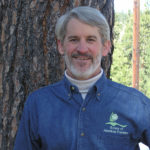
Forests and fire, two words often linked together. Are they good or bad? Or is fire like wind or rain or floods, and context and perspective are what really matter?
I have heard people argue about whether Smokey Bear is a great communication tool for educating people about the dangers of wildfire or the source of our problems with fire suppression.
I think we can be more nuanced.
As a society, we need to understand that fires, floods, earthquakes, hurricanes and volcanic eruptions are natural processes – always have been and always will be. They are forces that help shape our world, and we have to learn to live and abide with them.
Whether these natural events are good or bad depends on a human perspective. Most are beyond our control and we accept them as they come. Fire is an exception, as we can control most of them. But what are the consequences when we can’t control a fire and it becomes a disaster?
We can do things to mitigate the negative effects and enhance the positive effects. In hurricane and earthquake areas, we establish building codes to minimize the damage and maximize the survivability, even if a building is not salvageable. What do we do for wildfire? What should we do? Are policy changes needed?
In the U.S., are in our annual cycle of dealing with wildfires. Earlier this year, we had news of fires in the Southeast. There is ongoing news about the Southwest, and as the season progresses it is likely we’ll have wildfires in the Northwest and Northern Rockies.
The burning of valuable assets, whether they are homes, municipal watersheds, wildlife habitat like for Mexican spotted owl, favorite recreation areas or forests that could produce renewable wood for homes and offices, is significant.
Unfortunately, the conversation often stays focused on the immediate dramatic effects of evacuations, homes at risk and massive flames and smoke columns, but little attention is paid to what could or should have been done in our communities and across the landscape to mitigate the risks and minimize the potential damage.
Fire has been part of North American environments since the first bolt of lightning struck a tree, who knows how long ago. Humans have used fire to manage their landscape for thousands of years to accomplish their purposes.
We fight fires to protect valuable assets, and we light fires to protect and enhance the same and different assets. Forest ecologists talk about fire-dependent forests and how some forests need fire to maintain their biological diversity.
We tend to think of wildfires as a western U.S. issue, but there are fire-dependent forests all over the country: long-leaf pine in the Southeast, short-leaf pine in the Mid-Atlantic states.
All across the country, oaks, ponderosa pine, Douglas fir and larch trees have developed mechanisms to survive or regenerate after a fire. Humans need to adopt and implement mechanisms to help people, watersheds, wildlife habitat and structures to survive wildfires.
Over the next month, Treesource will explore how to live with fire. This week, we’ll look at how landscapes have changed over the past 100-plus years and the implications of those changes. In coming weeks, we’ll explore how Native Americans used fire from the East Coast to the West Coast. We will look, too, at fire management in wilderness areas to see what has been learned over the past 45-plus years of letting some fires “do their thing.” What can we glean from those experiences in relation to lands outside of wilderness? What happens when a wildfire burns through a stand where the trees have been mechanically thinned?
And what can we learn from the southeastern U.S. culture of fire use? The Southeast does more planned burning than the West, and yet we tend to think of the West as the region that is shaped by fire. Why is fire tolerated and encouraged more there than in the West? How does a changing climate, with longer droughts, hotter weather and less snowpack affect forest fires – and what we can do in response?
We all understand that smoke is unhealthy for humans, but how do we minimize the effects and risks of the smoke from wildfires and planned burns? Can we use mechanical treatments in lieu of fire or in combination?
We start our series of stories with a number of photographs. Matt Blois’ story and the accompanying sample of landscape photos taken repeatedly, some over 100 years apart, visually demonstrates in a way that words, charts and graphs alone cannot portray.
Last week’s book review of “Land on Fire” was a precursor of this focused effort. We hope you join us for this series on “Living with Fire,” and welcome your comments and suggestions.

very important and critical subject- look forward to reading more
This is from a June 18 press release from the WWF (World Wildlife Fund):
“The focus of efforts should shift from combating forest fires as they arise to preventing them from existing, through responsible long-term forest management. Responsible forest management is more effective and financially more efficient than financing the giant firefighting mechanisms that are employed every year.”
The press release was about recent fires in Portugal.
http://wwf.panda.org/?302990/WWF%2Dstands%2Dwith%2Dvictims%2Dfamilies%2Dof%2Dthe%2Ddevastating%2Dforest%2Dfire%2Din%2DPortugal
Aside from The Nature Conservancy, what environmental groups have called for “responsible long-term forest management”?
Hi Dave staying busy in retirement! Isn’t it wonderful! Looking forward to reading your articles.
Sue LeVan-Green